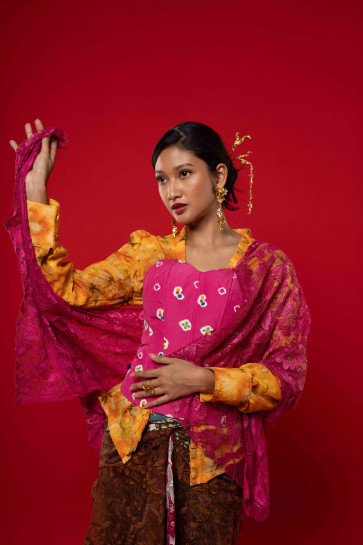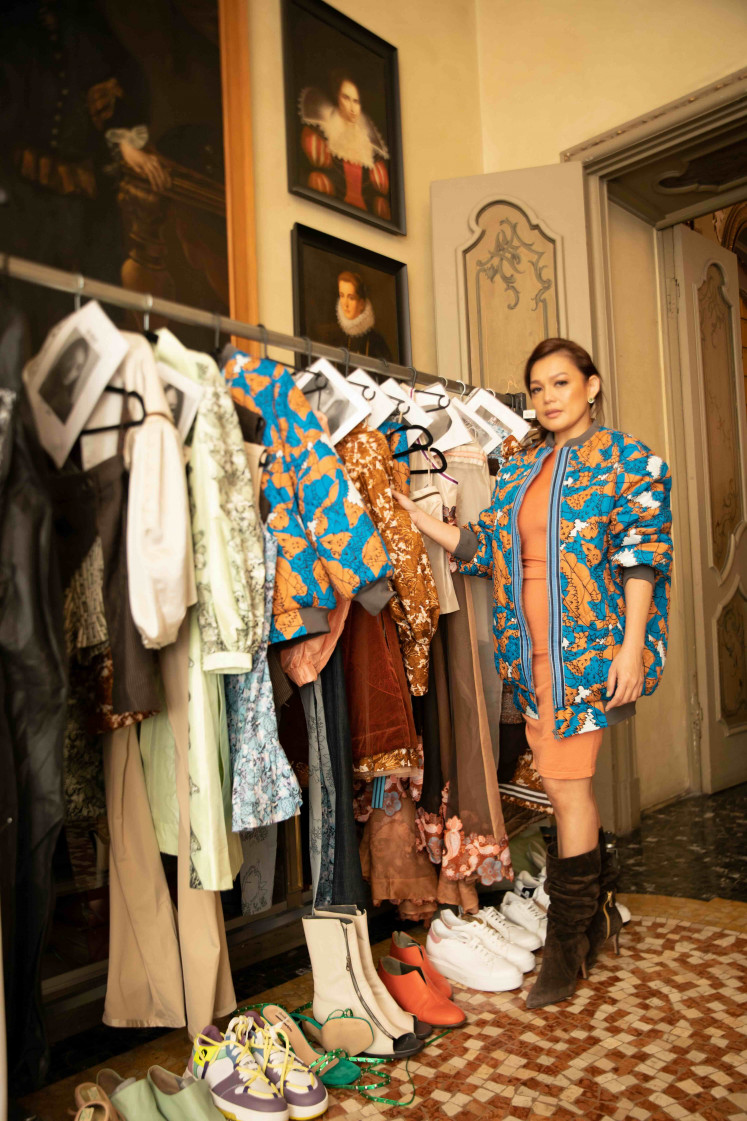Scrolling through AI-generated lookbooks and counterfeit-filled marketplaces, Indonesia’s designers face a reckoning: Can algorithms spark true desire, or does fashion’s soul remain stubbornly human?
Fashion design was once defined by the tactile artistry of hand-drawn sketches, precise fabric cutting and intuitive draping. But as the industry evolves, so do its tools.
With the rise of artificial intelligence, designers now use AI not just as a helper, but as a creative partner: one that expands their vision, streamlines workflows and pushes the limits of what’s possible.
Some designers dismiss AI as a form of cheating, but others say that misses the point.
“AI doesn’t replace creativity, it amplifies it,” says Jenny Yohana Kansil, founder of Burgo Fashion School Indonesia.
“The process still starts with a strong, visionary concept. Technology can’t replace the designer’s intent.”

Thank you!
For signing up to our newsletter.
Please check your email for your newsletter subscription.
Assistants, not replacements
Jenny’s comments come amid growing tension between generative AI and the creative industries.
Which direction fashion might take was previewed in Paris in 2023, when generative AI agency Maison Meta launched Metaverse Fashion Week. The digital-only runway shows featured fantastical, avant-garde looks, designs so bold or structurally complex they couldn’t exist in real life due to material limits or cost.
These experiments revealed AI’s power to imagine beyond the traditional, offering a new creative playground.
Indonesian designers are beginning to tap into this potential too.
Jenny used AI to help conceptualize her Ulos Collection for Spring/Summer 2024. By prompting the software to blend modern aesthetics with traditional Indonesian fabrics, she quickly generated hundreds of visual ideas, refining the most promising into wearable garments.
“With a strong concept and precise prompts, I can generate 100 designs in an hour,” she says.
But AI doesn’t finish the job, it just gets it started. She explains that designers still need to select materials, adjust proportions and develop each piece for real-world production.
Another designer, Nita Beliani, showcased an AI-enhanced collection at Jakarta Muslim Fashion Week last October, demonstrating how technology can complement cultural heritage.
“We might be the first brand in Indonesia to use AI to tap into our deepest creative desires and produce something original and unconventional,” Nita was quoted as saying at the time.
It’s part of a global-local movement: Embracing innovation without sacrificing identity.
That balance is key. While AI raises ethical concerns, especially around originality and intellectual property, it also unlocks possibilities once limited by time, budget or physical constraints. Designers can now visualize ideas at scale, interpret AI-generated textiles and breathe new life into traditional fabrics.
Jenny Yohana Kansil, founder of Burgo Fashion School Indonesia, showcases her 2023 Egalitarian collection in Milan, Italy. (Courtesy of Jenny Yohana Kansil)
Jenny gives a vivid example: Reimagining batik in bold silhouettes, like a sharp-shouldered dress Taylor Swift might wear during her Reputation tour, modern updates to tradition that appeal to today’s consumers.
She believes AI is democratizing fashion design.
“Creative individuals with a clear vision can now develop patterns and produce their own designs, no formal training required,” Jenny says.
“The barriers to design are disappearing, the skills are accessible.”
The copycat question
But what about design theft, long a sore spot in the industry?
When asked about this in the context of her Ulos Collection, Jenny acknowledges the risks but emphasizes the importance of responsible use.
“AI is merely a tool,” she says.
“Without proper prompting, its utility remains limited. And even then, many AI-generated designs aren’t feasible. Designers still need to assess them for fabric suitability and practical use.”
Jakarta-based designer Wilsen Willim, known for his signature windmill motifs, agrees.
“While AI does raise concerns about design theft, counterfeiting is hardly new,” he says.
“Even before AI, I’ve found countless copies of my skirt designs being mass-produced and sold online.”
He takes a pragmatic view.
“A lot of these sellers are small local businesses. At least this way, people who can’t afford the originals can still enjoy the style.”
“Imitation is the sincerest form of flattery that mediocrity can pay to greatness,” he adds, quoting Oscar Wilde.
Still, he believes the way forward isn’t to resist AI. It’s to out-create it.
“We should focus on storytelling,” Wilsen says.
“Because no matter how many counterfeits exist, there will always be those who value authenticity.”
The AI Advantage
AI offers practical advantages, too.
According to research from London-based Gitnux, automated pattern-cutting software can reduce fabric waste by 20 to 30 percent. Jenny adds that it helps her cut costs on muslin used for pattern-making, while also minimizing production waste.
A joint study by Janabadra University and Central University of Haryana found that textile waste accounts for nearly 80 percent of Indonesia’s waste output. AI, through better demand forecasting, can reduce overproduction by as much as 40 percent.
Jenny is also using generative AI to study traditional Indonesian garment patterns, which she can then replicate through digital printing.
Still, not every corner of fashion is ripe for disruption.
Wilsen points out that AI is unlikely to shake up bespoke tailoring anytime soon. While major brands may use it for forecasting trends and fast fashion, custom work, where relationships and precision matter, remains a human craft.
The conversation makes me think that using AI to design is sort of like asking it to write code. It helps, but it doesn’t finish the job. The creativity still comes from the human.
In the end, both Jenny and Wilsen agree that fashion is about connection.
Wilsen encourages designers to build strong relationships with clients rather than worry about AI’s influence. By focusing on personalized service, he says designers can deepen engagement and preserve the exclusivity that defines high-end tailoring.
“What truly fulfills me as a designer,” he adds, “is setting trends myself, like the batik skirt I created. That’s the real reward.”
“Desirability matters, right? Can AI really create that? I don’t think so. It can suggest, but it doesn’t walk the talk.”
Yohana Belinda writes pop culture with a business-centric twist. Her ABCs stand for ambition, bag charms and capybara.
























